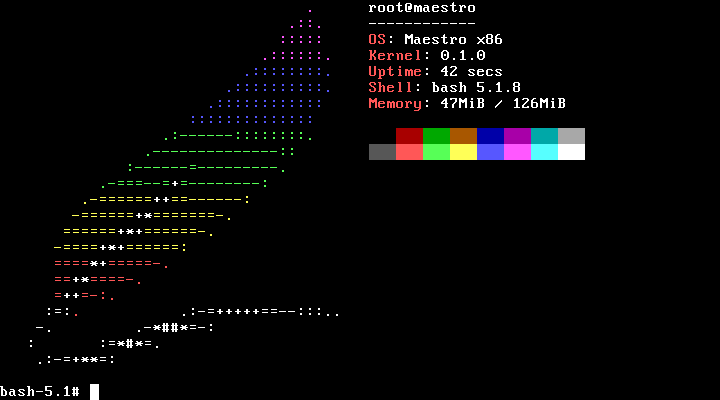Enter Maestro, a unix-like monolithic kernel that aims to be compatible with Linux in order to ensure wide compatibility. Interestingly, it is written in Rust. It includes Solfége, a boot system and daemon manager, maestro-utils, which is a collection of system utility commands, and blimp, a package manager. According to Luc, it’s creator, the following third-party software has been tested and is working on the OS: musl (C standard library), bash, Some GNU coreutils commands such as ls, cat, mkdir, rm, rmdir, uname, whoami, etc… neofetch (a patched version, since the original neofetch does not know about the OS). If you want to test it out, fire up a VM with at least 1 GB of ram.



You should’ve read the article, ”You should run the ISO with sufficient RAM (1GB should be more than enough). Such an amount of memory is required because packages to be installed are stored in RAM (on the initramsfs) instead of the disk. This is currently the best method since the OS is not yet able to read on a USB stick or CD-ROM by itself, so it relies on the bootloader for this. ”
I guess you could run on lower ram, but package installs require more.
I did read the article, reason of my edit